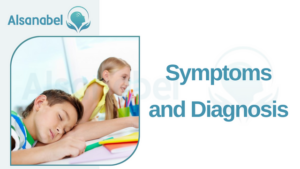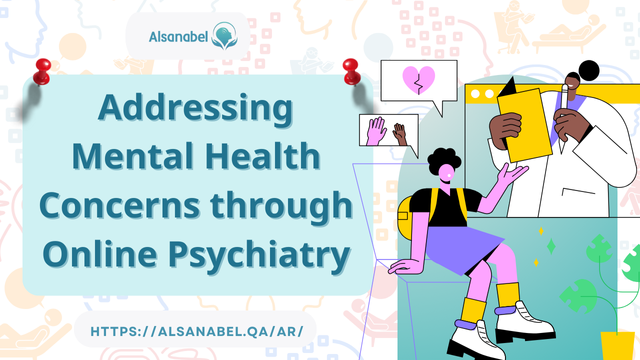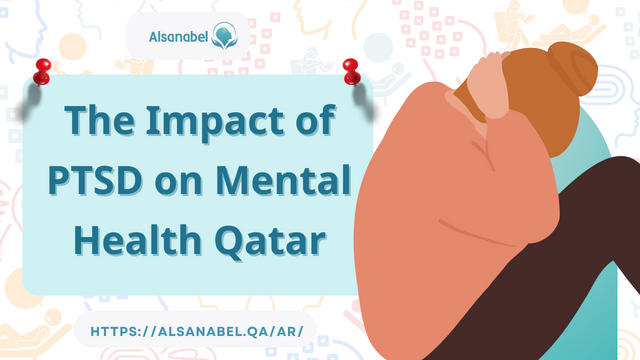Narcolepsy in Children Diagnosis and Management 2023
- Category ADHD
Table of Contents
ToggleNarcolepsy in Children
Narcolepsy is a chronic neurological disorder characterized by excessive daytime sleepiness and a tendency to fall asleep suddenly and unintentionally. In children, these symptoms often begin in childhood and can have a significant impact on their daily functioning and quality of life. They may experience overwhelming fatigue, difficulty concentrating, and problems with memory.
Another common symptom of pediatric narcolepsy is cataplexy, which refers to sudden and temporary muscle weakness or loss of muscle control triggered by strong emotions such as laughter or excitement. This can cause a child to collapse or have difficulty moving certain parts of their body, which can be upsetting and potentially dangerous.
Furthermore, children with narcolepsy may also experience rapid-eye-movement-related phenomena during sleep, such as sleep paralysis, sleep terror, and hypnagogic or hypnapompic hallucinations. These can be hallucinatory experiences that occur when falling asleep or waking up and can be quite distressing for the child.
Causes and risk factors of narcolepsy in children
The exact cause of narcolepsy is still not fully understood, but research suggests that it may be related to a combination of genetic and environmental factors. Certain genetic variations have been associated with an increased risk of developing narcolepsy, although not all individuals with these variations will develop the disorder.
Other potential risk factors for narcolepsy in children include exposure to certain infections, such as streptococcal infections, and an autoimmune response that affects the production of hypocretin, a chemical in the brain that helps regulate wakefulness and sleep.
It is important for parents and healthcare providers to be aware of the signs and symptoms of narcolepsy in children to ensure early detection and appropriate treatment. Proper diagnosis and management can greatly improve a child’s ability to function and enjoy a fulfilling life despite living with narcolepsy. Medication, lifestyle and behavioral modifications, and education/mental support are the three-pronged treatment approach typically used to address pediatric narcolepsy.
Symptoms and Diagnosis

Common symptoms of narcolepsy in children
- Excessive daytime sleepiness: Children with narcolepsy often experience overwhelming fatigue and are constantly tired during the day, regardless of how much sleep they get at night. This sleepiness can make it difficult for them to stay awake and alert during school or other activities.
- Cataplexy: Cataplexy is a defining symptom of narcolepsy and is characterized by sudden and temporary muscle weakness or loss of muscle control. In children, cataplexy is often triggered by strong emotions such as laughter or excitement. It can cause a child to collapse or have difficulty moving certain parts of their body, which can be distressing and potentially dangerous.
- Sleep paralysis: Children with narcolepsy may experience episodes of sleep paralysis, which is a temporary inability to move or speak while falling asleep or waking up. This can be terrifying for the child as they are aware of their surroundings but cannot move or call for help.
- Hallucinations: Another common symptom of narcolepsy in children is hallucinations, particularly hypnagogic or hypnapompic hallucinations. These are vivid and sometimes frightening visual or auditory hallucinations that occur when falling asleep or waking up.
Diagnostic criteria and tests for narcolepsy in children
Diagnosing narcolepsy in children can be challenging due to the overlap of symptoms with other sleep disorders or medical conditions. However, healthcare providers use specific criteria and tests to make an accurate diagnosis. These include:
- Medical history: The healthcare provider will conduct a thorough interview with the child and their parents to understand their sleep patterns, symptoms, and any potential triggers or family history of narcolepsy.
- Sleep study: A polysomnogram and multiple sleep latency test (MSLT) are commonly used to measure sleep patterns and diagnose narcolepsy. The polysomnogram records brain activity, eye movements, and muscle activity during sleep, while the MSLT measures daytime sleepiness by monitoring daytime naps and the time it takes for the child to fall asleep.
- Genetic testing: Genetic testing may be done to identify any specific genetic variations associated with narcolepsy.
Early detection and accurate diagnosis of narcolepsy in children are crucial in providing appropriate treatment and support. With proper management, children with narcolepsy can manage their symptoms effectively and lead fulfilling lives.
Treatment Options for Narcolepsy in Children
Medications for managing narcolepsy symptoms in children
The goal of treatment for childhood narcolepsy is to reduce daytime sleepiness and other disturbing symptoms while improving daytime function and quality of life. Medications play a crucial role in managing the symptoms associated with narcolepsy in children.
Prescription medications are used to treat excessive daytime sleepiness, cataplexy, sleep disturbances, and hallucinations. These medications work by regulating and improving the brain’s control over sleep-wake cycles. Commonly prescribed medications include stimulants and wake-promoting agents, such as modafinil and methylphenidate, which help promote wakefulness during the day and alleviate daytime sleepiness.
In addition to these medications, antidepressants and selective serotonin reuptake inhibitors (SSRIs) may be used to manage cataplexy and sleep disturbances associated with narcolepsy. These medications help to reduce the frequency and severity of cataplexy episodes and improve overall sleep quality.
It is important to note that medication management should be individualized based on each child’s specific symptoms and needs. Close monitoring and regular follow-up with healthcare providers are necessary to ensure the effectiveness and safety of these medications.
Non-pharmacological approaches to treating narcolepsy in children
Alongside medication, non-pharmacological approaches are also an essential part of the comprehensive treatment plan for childhood narcolepsy. These approaches focus on lifestyle modifications and behavioral interventions to improve sleep hygiene and manage symptoms.
Behavioral modifications may include creating a regular sleep schedule, ensuring a relaxing sleep environment, and implementing strategies to improve sleep quality and quantity. Education and counseling can also be beneficial for the child and their families to understand and cope with the challenges posed by narcolepsy.
Additionally, establishing a supportive and understanding environment at school, with the involvement of teachers, coaches, and other caregivers, is crucial. This may involve providing accommodations such as providing options for napping or allowing extra time for completing tasks.
Overall, treatment plans for childhood narcolepsy should be comprehensive and involve a combination of pharmacological and non-pharmacological approaches. The goal is to reduce daytime sleepiness and other disturbing symptoms, improve daytime function, and enhance the quality of life for children so that they can live as near a normal life as possible. With proper management and support, children with narcolepsy can thrive and overcome the challenges associated with this neurological disorder.
Coping Strategies for Children with Narcolepsy

Educational support and accommodations for children with narcolepsy
Children with narcolepsy may face unique challenges in school due to symptoms such as excessive daytime sleepiness and cataplexy. It is important for educators to play an active role in identifying these symptoms and providing appropriate support to help these children succeed academically.
One effective strategy is to develop a special education plan in collaboration with the child’s principal or school counselor. This plan should outline specific accommodations or modifications tailored to the child’s needs. Examples of accommodations may include allowing flexibility in sleep schedules, providing options for napping during the day, or allowing the child extra time to complete tasks or tests. It is crucial to communicate regularly with the child’s school staff and healthcare providers to determine what accommodations are most suitable for the child’s individual needs.
Tips for managing sleepiness and promoting healthy sleep habits
- Establish a consistent sleep schedule: Encourage the child to maintain a regular sleep routine by going to bed and waking up at the same time every day, even on weekends. This helps regulate their sleep-wake cycle and reduce sleepiness during the day.
- Create a conducive sleep environment: Ensure that the child’s bedroom is quiet, dark, and comfortable. Consider using blackout curtains or a white noise machine to minimize disturbances that may disrupt their sleep.
- Encourage regular physical activity: Engaging in physical exercise during the day can help promote alertness and improve overall sleep quality. Encourage the child to participate in activities they enjoy, such as sports or dance.
- Limit caffeine and electronic devices: Advise the child to avoid consuming caffeine and using electronic devices close to bedtime, as these can interfere with falling asleep.
- Teach relaxation techniques: Help the child learn and practice relaxation techniques such as deep breathing exercises or meditation. These techniques can be beneficial in reducing stress and promoting better sleep.
By implementing these coping strategies and receiving the necessary support from educators, healthcare providers, and family members, children with narcolepsy can effectively manage their symptoms and thrive in their academic and personal lives.
Parental Support and Involvement
The role of parents in helping children with narcolepsy
Parents play a crucial role in supporting and helping children with narcolepsy manage their condition. By being actively involved and providing the necessary support, parents can make a significant difference in their child’s quality of life.
First and foremost, parents should educate themselves about narcolepsy, its symptoms, and its impact on their child’s daily life. This knowledge will enable them to better understand and empathize with their child’s experiences. Additionally, it will help them effectively advocate for their child’s needs in both medical and educational settings.
Parents should also establish open and honest communication with their child. Encouraging their child to express their feelings, concerns, and frustrations regarding narcolepsy can help foster a supportive environment. By creating a safe space for dialogue, parents can help their child develop coping mechanisms and strategies to manage their condition.
Furthermore, parents should actively seek out resources and support networks for themselves and their child. Support groups, online forums, and organizations specializing in narcolepsy can provide valuable information and emotional support. These platforms also provide an opportunity for parents to connect with other families in similar situations, allowing them to share experiences and learn from one another.
Effective communication strategies with healthcare providers and educators
Clear and effective communication with healthcare providers and educators is vital to ensure that children with narcolepsy receive the necessary support and accommodations. Parents should proactively communicate with healthcare providers to discuss treatment options, potential side effects of medications, and any concerns or changes in their child’s symptoms.
Similarly, parents should establish a strong line of communication with their child’s educators. This involves informing teachers and school staff about the child’s diagnosis and specific needs. Teachers should be made aware of any accommodations prescribed by healthcare providers, such as allowing breaks for napping or providing additional time for assignments or tests.
Regular communication and updates with both healthcare providers and educators are crucial to ensure that the child’s needs are being met in both medical and academic settings. By working together as a team, parents, healthcare providers, and educators can provide a supportive and inclusive environment that allows children with narcolepsy to thrive and reach their full potential.
Impact on Emotional Well-being
Psychological impact of narcolepsy on children
Children with narcolepsy often experience significant psychological and emotional challenges. The unpredictable nature of narcolepsy symptoms, such as excessive daytime sleepiness and sudden muscle weakness, can lead to feelings of frustration, embarrassment, and isolation. These emotional struggles can contribute to psychosocial impairment, including depression, anxiety, and low self-esteem.
Children with narcolepsy may feel different from their peers, as their condition sets them apart in terms of sleep patterns and the ability to participate fully in daily activities. The constant need for accommodations, such as napping or taking medication during school hours, can also make them feel different or singled out.
In addition, the impact of narcolepsy on cognitive function can further exacerbate emotional well-being. Cognitive impairment, such as difficulties with attention, memory, and executive functions, can affect a child’s academic performance and social interactions. This can lead to feelings of frustration, inadequacy, and lowered self-confidence.
Supporting emotional well-being and self-esteem in children with narcolepsy
It is crucial for parents, healthcare providers, and educators to provide support and create a nurturing environment for children with narcolepsy to promote emotional well-being and self-esteem.
First and foremost, parents can play a critical role in supporting their child’s emotional needs. They can foster open and honest communication, allowing their child to express their feelings and concerns. This can help validate the child’s emotions and provide an opportunity for them to develop coping strategies. Parents can also help their child connect with support groups or organizations that specialize in narcolepsy to provide valuable emotional support and a sense of belonging.
Healthcare providers and educators should also be aware of the potential psychological impact of narcolepsy and be proactive in addressing the child’s emotional well-being. This can include regular check-ins with the child, providing information on coping strategies, and collaborating with parents to ensure the child’s needs are met.
Educational settings can also play a crucial role in supporting self-esteem and emotional well-being. Teachers and school staff can create a supportive and inclusive environment by educating classmates about narcolepsy and promoting empathy and understanding. They can also work with the child and their parents to provide necessary accommodations, such as flexible scheduling or modified assignments, to alleviate any academic-related stressors.
By addressing the psychological impact of narcolepsy and providing the necessary support, children with narcolepsy can develop resilience and thrive in their personal and academic lives.
Transitioning to Adulthood

Preparing adolescents with narcolepsy for the transition to adulthood
The transition from adolescence to adulthood can be a challenging time for any individual, but it poses unique obstacles for adolescents with narcolepsy. As they navigate the physical, emotional, and social changes that come with adulthood, it is essential to assist them in preparing for this transition.
One crucial aspect of preparing adolescents with narcolepsy for adulthood is empowering them to become advocates for their own health. Encourage open communication between the adolescent, their parents, and healthcare providers to ensure that their specific needs and concerns are addressed. This includes discussing their narcolepsy symptoms, medication management, and strategies for managing their condition in various situations.
Additionally, it is important to educate adolescents with narcolepsy about self-care practices and lifestyle modifications that can help optimize their overall well-being. Instruct them on the importance of maintaining a consistent sleep schedule, practicing good sleep hygiene, and prioritizing rest and relaxation. Teach them stress management techniques, such as meditation or mindfulness, to cope with the challenges that may arise during the transition to adulthood.
Addressing vocational and educational challenges
Vocational and educational aspirations can be significantly impacted by narcolepsy in children. The symptoms of excessive daytime sleepiness and cognitive impairments can interfere with academic performance and limit career options. To address these challenges, collaboration between parents, educators, and healthcare providers is crucial.
When it comes to vocational pursuits, adolescents with narcolepsy may need guidance in exploring career options that align with their abilities and accommodate their symptoms. Healthcare providers can provide information and resources on various job roles that allow for flexibility in scheduling or remote work options. Vocational counselors can also assist in identifying vocational training programs or higher education opportunities that cater to the unique needs of individuals with narcolepsy.
By providing support, understanding, and appropriate accommodations, the transition to adulthood for adolescents with narcolepsy can be smoother. With the right guidance and resources, they can overcome vocational and educational challenges and pursue their goals with confidence and success.









